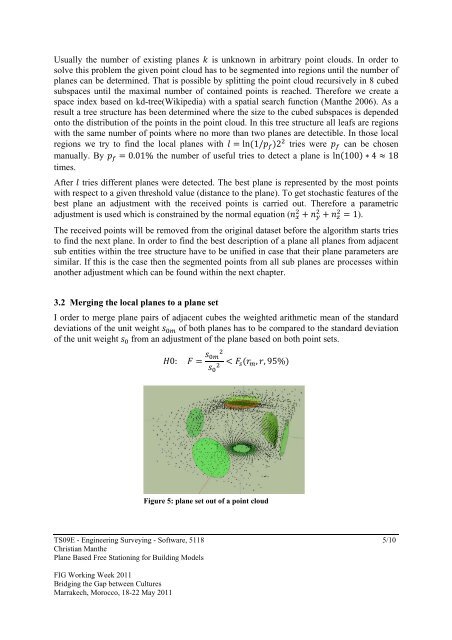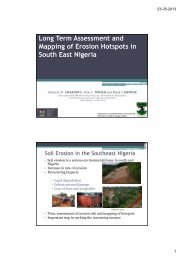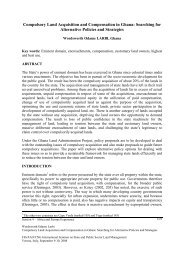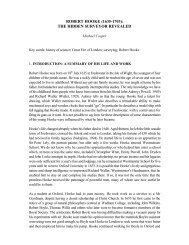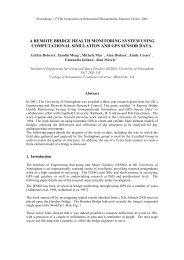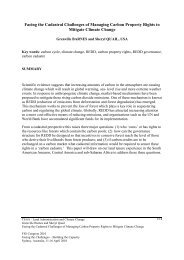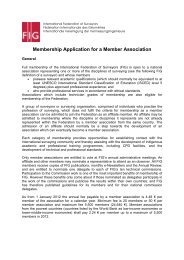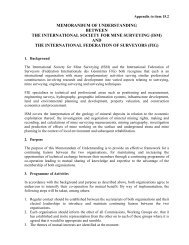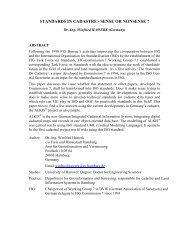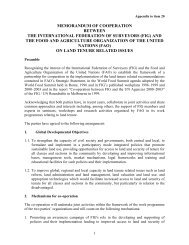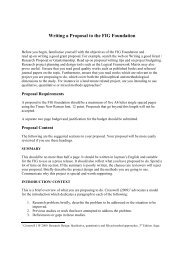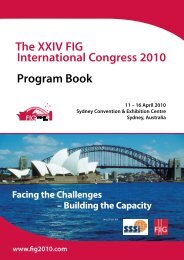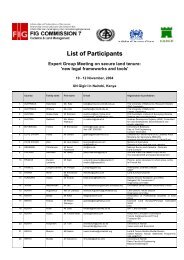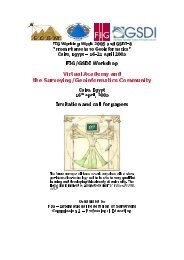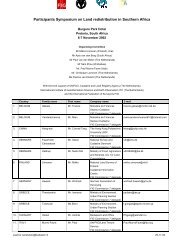Plane Based Free Stationing for Building Models - FIG
Plane Based Free Stationing for Building Models - FIG
Plane Based Free Stationing for Building Models - FIG
You also want an ePaper? Increase the reach of your titles
YUMPU automatically turns print PDFs into web optimized ePapers that Google loves.
Usually the number of existing planes � is unknown in arbitrary point clouds. In order to<br />
solve this problem the given point cloud has to be segmented into regions until the number of<br />
planes can be determined. That is possible by splitting the point cloud recursively in 8 cubed<br />
subspaces until the maximal number of contained points is reached. There<strong>for</strong>e we create a<br />
space index based on kd-tree(Wikipedia) with a spatial search function (Manthe 2006). As a<br />
result a tree structure has been determined where the size to the cubed subspaces is depended<br />
onto the distribution of the points in the point cloud. In this tree structure all leafs are regions<br />
with the same number of points where no more than two planes are detectible. In those local<br />
regions we try to find the local planes with ��ln�1/���2� tries were �� can be chosen<br />
manually. By �� � 0.01% the number of useful tries to detect a plane is ln�100� ∗4�18<br />
times.<br />
After � tries different planes were detected. The best plane is represented by the most points<br />
with respect to a given threshold value (distance to the plane). To get stochastic features of the<br />
best plane an adjustment with the received points is carried out. There<strong>for</strong>e a parametric<br />
� � � adjustment is used which is constrained by the normal equation (�� ��� ��� �1).<br />
The received points will be removed from the original dataset be<strong>for</strong>e the algorithm starts tries<br />
to find the next plane. In order to find the best description of a plane all planes from adjacent<br />
sub entities within the tree structure have to be unified in case that their plane parameters are<br />
similar. If this is the case then the segmented points from all sub planes are processes within<br />
another adjustment which can be found within the next chapter.<br />
3.2 Merging the local planes to a plane set<br />
I order to merge plane pairs of adjacent cubes the weighted arithmetic mean of the standard<br />
deviations of the unit weight ��� of both planes has to be compared to the standard deviation<br />
of the unit weight �� from an adjustment of the plane based on both point sets.<br />
�0: � � ��� �<br />
� �<br />
� ������,�,95%� TS09E - Engineering Surveying - Software, 5118<br />
Christian Manthe<br />
<strong>Plane</strong> <strong>Based</strong> <strong>Free</strong> <strong>Stationing</strong> <strong>for</strong> <strong>Building</strong> <strong>Models</strong><br />
<strong>FIG</strong> Working Week 2011<br />
Bridging the Gap between Cultures<br />
Marrakech, Morocco, 18-22 May 2011<br />
Figure 5: plane set out of a point cloud<br />
5/10


